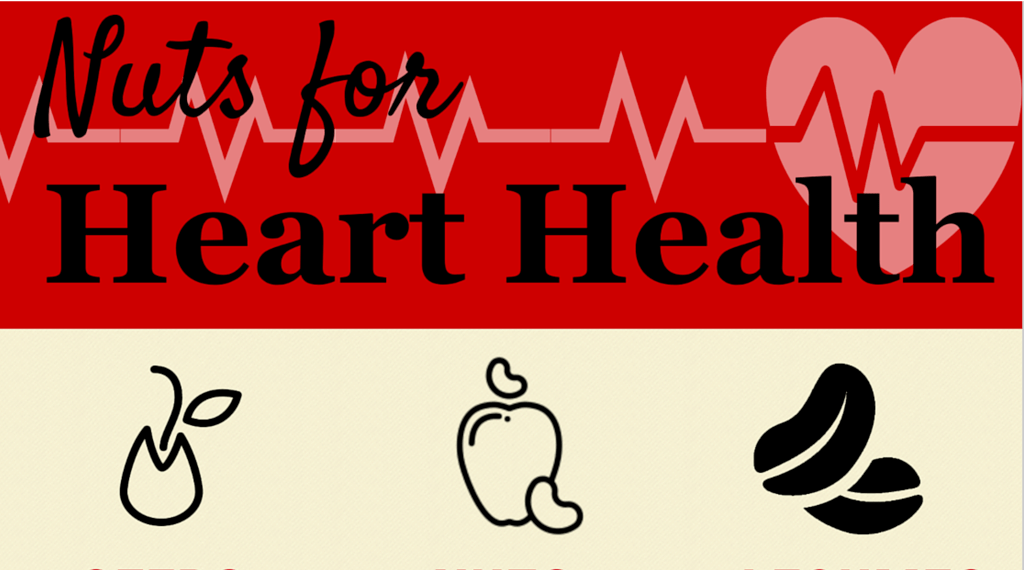Welcome to Fats Friday! In honor of February being American Heart Month, we’ll be spending each Friday sharing fun facts about fats in different foods like dairy, meat and seafood, oils, and nuts. Stay tuned each week to see more great ways to show some love for your heart with food!
Did you know that February is American Heart month? Protect your ticker with nuts and seeds! These crunchy snacks pack a punch with a variety of heart-protective fats. Nuts and seeds contain no cholesterol, are high in unsaturated fats, and low in saturated fat. They’re also packed with vitamins, minerals, fiber and protein!

A Heart-y Snack
Research suggests that eating 1.5 ounces of most nuts per day as part of a low saturated fat diet may reduce the risk of heart disease.
Walnuts and flaxseed, for example, are particularly high in omega-3 fatty acids. Omega-3s are a type of polyunsaturated fat (PUFA). These PUFAs can help improve your cholesterol levels, lower your blood pressure, and reduce your risk of developing blood clots.
Almonds and pecans, on the other hand, are high in monounsaturated fats (MUFA), which can improve insulin sensitivity. Like PUFAs, MUFAs also help improve your cholesterol.
FUN FACT: Did you know that peanuts are not (tree) nuts? That’s right—peanuts are legumes, as are pinto, black and kidney beans. Coconut, nutmeg, and water chestnuts aren’t nuts either!
Remember, a Handful NOT a Can Full!
Nuts and seeds are delicious and nutritious, so it’s tempting to eat the whole can! Remember to keep your serving sizes in check, as these treats are high in calories.
One ounce of nuts or seeds or two tablespoons of nut butter is an appropriate serving size.
QUICK TIP: A palm full of nuts is roughly equal to one ounce.
Get Nuts in the Kitchen
Nuts and seeds are versatile cooking components. You can purchased them whole, chopped or slivered, from bulk bins, or in re-sealable bags and cans. If you buy in bulk, you can keep nuts fresh for longer by storing them in the refrigerator.
Did you know that nuts and seeds come in a variety of forms – including oils, flours, and butters? Here are a few ways to get nuts in the kitchen!
- Use nut or seed oils to stir fry vegetables or concoct a salad dressing.
- Try nut flours as an alternative to traditional flours for baked goods. If you must avoid gluten for medical reasons, remember that nuts (and their flours) do not contain gluten.
- Throw your favorite legume (beans or lentils) into chili, soup, or stew.
- Blend hazelnuts into pesto or chickpeas into hummus to add flavor to your favorite foods.
Now, learn more about the fats in different nuts with our latest infographic! Click to view.:
Sources
Dietary Fats: Balancing Health and Flavor
This blog was co-authored by Kris Sollid, Director for Nutrients Communications, and Megan Solloway, University of Maryland College Park Dietetic Intern.


